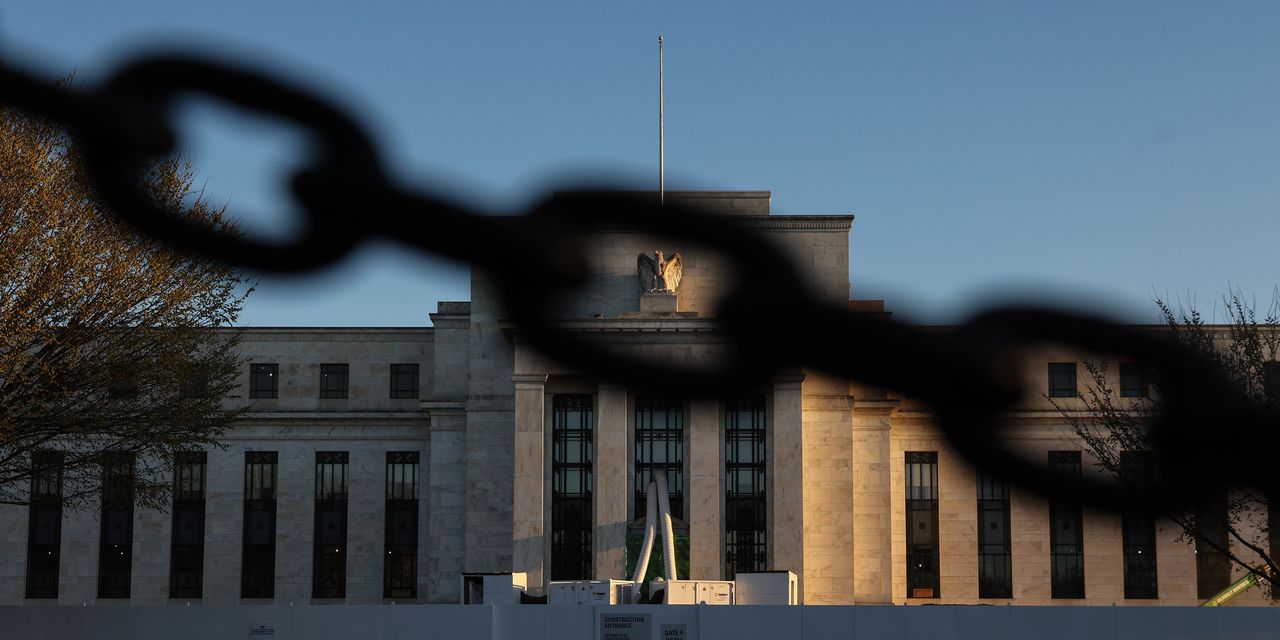Federal Reserve Chairman Jerome Powell said Wednesday that credit conditions will tighten after the failures of several regional U.S. banks, but warned against expectations for the central bank to cut rates in 2023.
“The question for us, though, is how significant will that be?” Powell said of tighter credit conditions that could harm households and the economy. He also repeated that “rate cuts are not in our base case.”
Not everyone in the bond market believes it.
“Our expectation remains that today’s hike will likely be the last of this cycle, and that the long tail of the current banking-sector shock will force the Fed into 50-75 basis points of rate cuts by year-end,” said Daleep Singh, chief global economist at PGIM Fixed Income, in emailed commentary.
Singh’s key concern is that stress at midsize banks will remain elevated without a “clear-cut” backstop for all depositors at those lenders.
Furthermore, “the size and persistence of the shock to the real economy from the banking sector remains highly uncertain, casting doubt on any insistence that rate cuts this year won’t be necessary,” he said.
Powell, in an afternoon press conference, said “all depositor savings” at U.S. banks are safe. That conflicted with what Treasury Secretary Janet Yellen told a Senate panel hours earlier.
Yellen was asked Wednesday about reports of officials studying ways to expand FDIC coverage to all deposits, beyond the standard $250,000 threshold. “This not something we have looked at, it’s not something that we’re considering,” she said.
After California’s Silicon Valley Bank collapsed on March 10 and Signature Bank
SBNY
in New York was taken over by regulators two days later, customers were told by regulators that all their deposits at those banks would be safe.
Bank stress in focus
“The official party line is still hike and hold,” said Kathy Jones, chief fixed-income strategist at Schwab Center for Financial Research, in a phone interview. But under the surface, she said Fed officials might not be entirely sure of that path, given that any additional blow-up at banks could change the outlook.
Furthermore, the 10-year Treasury yield
TMUBMUSD10Y,
falling to about 3.5% on Thursday from a 4.2% high in October telegraphs expectations of slower growth and less inflation down the road, Jones said. Unlike the policy sensitive 2-year Treasury rate
TMUBMUSD02Y,
it reflects a longer-term outlook for the economy.
Powell on Wednesday said that tighter credit conditions following recent stress at banks could do some of the Fed’s work for it, namely that the central bank may only need raise its policy rate from its current 4.75%-5% range once more this year.
Trading in fed-fund futures on Wednesday pointed to a 45.5% chance of a rate cut to a 4.50%-4.75% range in late June and a 33.7% chance of a policy range of 4.25%-4.50% in December.
Gregory Daco, chief economist at EY, said the Fed appeared to befriend “a credit crunch in its inflation fight,” on Wednesday, while reiterating a view that cuts are a strong possibility before the end of the year.
Commercial real-estate concerns
Fed Chair Powell waved off concerns that weakness in commercial real estate could unleash financial stability risks, while looking to drive home a message that the U.S. banking system remains resilient.
See: Bank jitters put spotlight on commercial real estate. 3 charts pinpoint the potential trouble spots.
Jones at Schwab said commercial real-estate loans could be a potential weak spot for smaller banks. “They are big lenders to commercial real estate,” Jones said, noting that higher rates, weakness in credit markets and sector-specific worries like office buildings could cloud the backdrop for markets.
Stocks closed sharply lower Wednesday, but were clawing back gains Thursday with the Dow Jones Industrial Average
DJIA,
up about 437 points, or 1.4%, the S&P 500 index
SPX,
1.6% higher and the Nasdaq Composite Index
COMP,
gaining 2.3%. The Dow Jones Equity REIT index
DJDBK,
climbed 2.6%.
Read: This is why stocks tumbled after Fed’s Powell signaled only one more rate hike in 2023
Read the full article here










